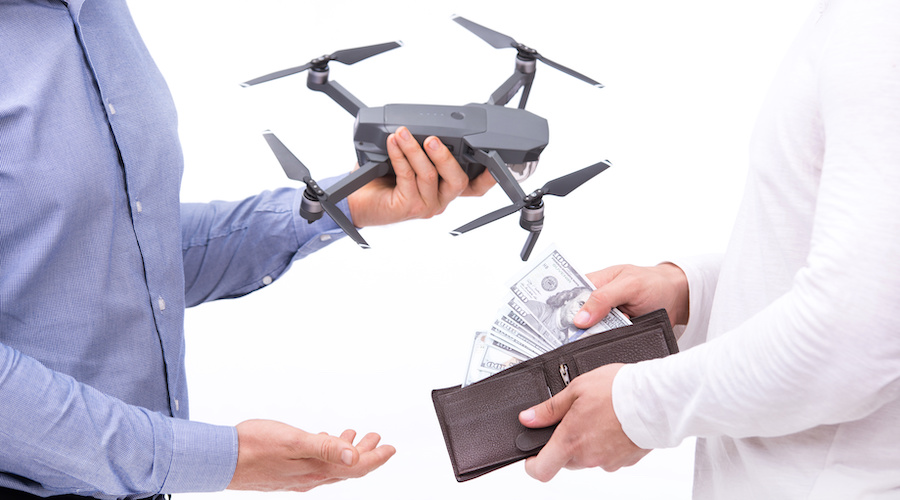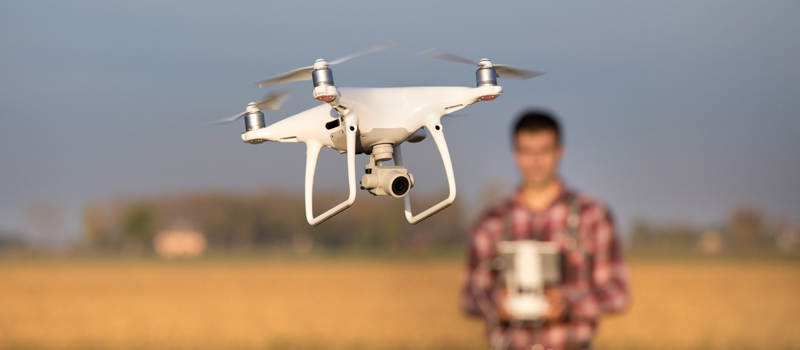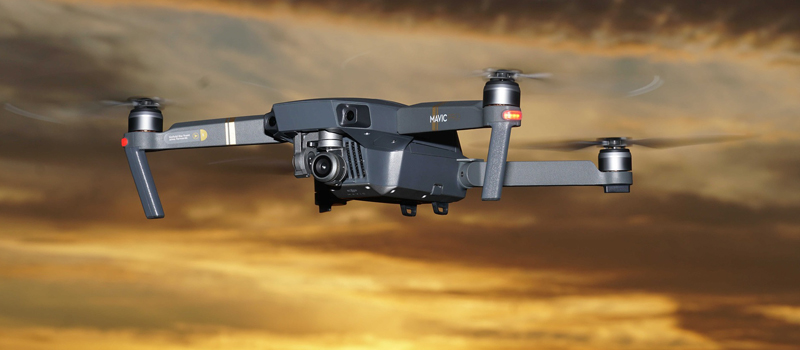One of the best things about drones is that they can fly just about anywhere. However, we’d like to add a qualifier to that statement – they can fly anywhere that’s LEGAL. If you’re a new drone pilot or are thinking of getting a drone for the first time, then you’ll have to do some research on where you may and may NOT fly your drone.
Answering this question is not a straightforward process. Although there are areas of national airspace that are permanent no-fly zones, the national airspace is still a very dynamic entity with rules that can change every few days or so. How will you know if you’re safe to fly? Check out our tips here.
Stay away from controlled airspace unless absolutely necessary
The first thing you need to keep away from, if it’s your first time flying a drone, is controlled airspace. These are no-fly zones that typically occur near airports. The shape and size of controlled airspace will vary based on how much air traffic the airport receives regularly. Drone flight is generally prohibited in these areas to avoid encounters between drones and manned aircraft – a problem that continues to plague the drone community.
To be clear, flying a drone in controlled airspace isn’t impossible, even for recreational drone pilots. If absolutely necessary, you can request for airspace authorization via the LAANC system. This feature can be found in many drone flight planning apps like KittyHawk or Airmap. Through LAANC, you can request for authorization from the FAA by providing your personal details, as well as those for your drone and the operations you are planning to do.
Airspace authorization via LAANC can be granted in just a few minutes, so you don’t necessarily need to plan way ahead for drone operations in controlled airspace. This initiative by the FAA cuts down on the red tape that drone pilots need to go through for both commercial and recreational purposes.
National parks are permanent no-fly zones
National Parks, like the Yosemite Valley or Yellowstone, sound like excellent places to fly a drone. As much as we enjoy looking at these natural sights from the ground, can you imagine how much better they will look from the sky?
However, there’s a snag to that plan. According to the National Parks Service (NPS), drone flight is strictly prohibited in all National Parks in the US. The restriction applies not just to National Parks, but also to other sites under the jurisdiction of the NPS. This includes about a hundred nature trails, rivers, historic sites, monuments, biking trails, seashores, and battlefields.
Why such a wide restriction? The NPS argues that drones pose an inherent hazard to the visitors and personnel of National Parks and can also prove to be disruptive of the experience of visiting such sites. It’s hard to argue about this – drones can be loud and obnoxious when they fly at low altitudes.
The NPS is very serious about implementing this rule. There have already been accounts of people being fined because of a violation, notably a man who had to pay a penalty after flying a drone over the Grand Prismatic Spring in the Yellowstone National Park. The NPS is also very selective about granting exceptions to this rule – they typically only allow drone operations for scientific studies or research.
Read up on local regulations
There’s another layer of complexity to determining whether you’re good to go flying your drone over a particular area. Aside from the rules of the FAA, you’ll also need to take note of any local drone-specific laws. Some of these may be unique to your particular city or state. For instance, HB 2167 in Texas permits certain professions to take aerial photos only if there are no identifiable individuals in the image.
Public parks or state parks, in contrast to National Parks, are also under the jurisdiction of the local government. As such, the rules on drone flight may vary from one state park to another. For instance, there are no rules restricting drone flight in the Salt Point Park in the Sonoma Country, but drone flight is absolutely prohibited in the Del Valle Regional Park in California.
The fact that cities and states are able to implement their own drone laws has proven to be problematic for a lot of drone pilots. FAA does not keep track of these unique locality-based restrictions and strongly recommends that drone pilots check the local laws before they start any drone operations.
When in doubt, it’s best to do a little research in your city or state’s website. In the case of public parks, you can get in touch with park administrators or look for signs posted inside the park. The FAA recognizes the authority of states and municipalities over where drones can take off and land within their area of jurisdiction.
Use a drone flight planning app
Having to look up a sectional chart every time you go out for a quick flight with your drone sounds tedious and impractical. What you can do instead is to install a drone flight planning app on your smartphone that you can easily check to scan for nearby no-fly zones. There are a lot of good examples, including FAA’s very own B4UFLY app. Other notable options include Airmap, Kittyhawk, and DJI FlySafe.
These apps display a map of your current location along with the boundaries of no-fly zones. You can also use the map’s search function to help you plan for future drone operations. Take note that these apps mostly rely on the FAA data, thus displaying only no-fly zones according to FAA rules. The drone flight restrictions on National Parks are also integrated into most drone flight planning apps.
The benefit of using a drone flight planning app is that you’re sure that you are receiving up-to-date information. Some areas may have Temporary Flight Restrictions (TFR) over them in anticipation of crowded events of VIP movements. This is information that you will not see in a sectional chart but will helpfully be provided by a flight planning app.
There are some words of caution to take heed of should you decide to use these apps: they usually have no info on local drone-related laws. Thus, you may find yourself receiving a “good to go” message from one of these apps and yet still violating one or two laws that you did not anticipate.
Reconciling FAA rules with local rules
Although the FAA has ultimate authority over all of national airspace, local governments have created their own drone restrictions because of concerns over security and privacy. However, since these local governments have no authority over national airspace, their restrictions mostly focus on where and when drones can take off. It’s all just semantics, though – you can still face jail time or get fined if you violate any of these local laws.
Given that most drone flight planning apps cannot capture local drone flight rules, is there a single foolproof way to make sure that you have all your bases covered? Unfortunately, there isn’t. While these drone flight planning apps are great for avoiding no-fly zones and requesting for airspace authorization, they offer no help in making sure that you follow local laws. Even FAA’s very own B4UFLY app offers no help in this department.
To make sure that you adhere to local laws, you’re simply going to have to do your own research. Look for bulletins in your city or state’s website or ask the local police department. If there’s a drone community operating in the area, you can also ask them for their advice based on their experience. Until standard drone regulations become a thing in the US, you’ll just have to settle for this quite tedious method.
Final thoughts
Along with the increase in the number of drones flying around in national airspace are the growing concerns over how drones can affect airspace safety, as well as the security and privacy of bystanders. This has prompted both the FAA and local governments to come up with their own versions of drone flight restrictions. Although the intentions are good, the lack of any centralization of these laws has made it very difficult for drone pilots to navigate through all the legalities.
Keep all these in mind whenever you pick a spot to fly your drone. It’s not enough to receive a “good to go” from a drone flight app. Ask around, do your research, and make sure that all your bases are covered.



